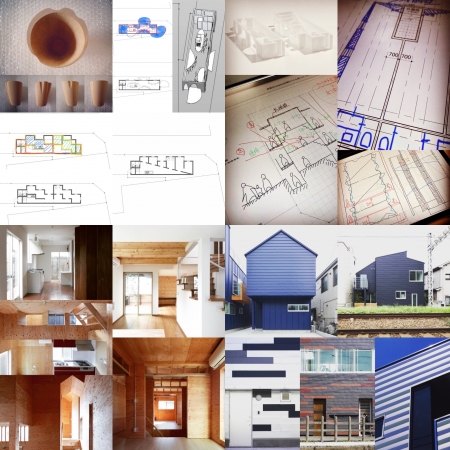物としての建築
建築と建築以外の物との違いは内部に人が入れるかどうか、内部に人が入り込める空隙があるかどうか、その空隙を空間と呼ぶが、その違い、当たり前のような違いだけれども、その違いが大きい。内部に人が入り込める空間があることによりスケールが違う、大きい、建築はそれ以外の物と比べて大きくなる。この大きさが人の手の中で扱えるか、人が足を使って動くのかの差になる。
したがって、建築という物は人との関わり合いの中で存在することになる。建築以外の物であれば、人との関わり合いがなくても、例えば、石、木、茶碗でも、茶碗は人が使う物だが、人がいなくても茶碗はそこに存在できる、その時はもしかしたら茶碗という使われ方はしないかもしれないが、鑑賞用としては存在できる。だから、建築も廃墟になれば、建築の用をなさないから、人との関わりがなくても存在できる。しかし、廃墟は建築か、という問いは残る、同様にギリシャのパルテノン神殿も。
純粋に人との関わり合いがなく、物としてのみ存在する建築はあり得るのだろうか。それは事業としての出発点では人の介在は当然あるにせよ、それはさて置いて、人との関わりがない物としての建築がイメージできない。もし物としてのみの建築があるならば、その建築を使う人がいない、すなわち、ピラミッドやタージマハルのような巨大なお墓ぐらいだろうか。ならば、人との関わり合いの中で建築を考える方が素直で自然のような気がする。
"Architecture as a thing"
The difference between architecture and non-architectural things is whether or not people can enter inside, whether or not there is a space inside, and that space is called a space. The difference is a natural difference, but the difference. Is big. The scale is different due to the space inside, which is large, and the architecture is larger than other things. This size makes a difference whether it can be handled in the hands of a person or whether a person moves with his or her feet.
Therefore, architecture exists in the relationship with people. If it is something other than architecture, even if there is no relationship with people, for example, stones, wood, bowls, bowls are used by people, but even if there are no people, bowls can exist there, at that time If so, it may not be used as a bowl, but it can exist for viewing. Therefore, if architecture is abandoned, it will not be used for architecture, so it can exist without any involvement with people. However, the question remains whether the ruins are architecture, as well as the Parthenon in Greece.
Is it possible for architecture to exist only as a thing without having a pure relationship with people? It is natural that there is human intervention at the starting point as a business, but aside from that, I cannot imagine architecture as a thing that has nothing to do with people. If there is an architecture only as a thing, then no one uses it, that is, a huge tomb like the Pyramid or the Taj Mahal. If so, I feel that it is more straightforward and natural to think about architecture in relation to people.


